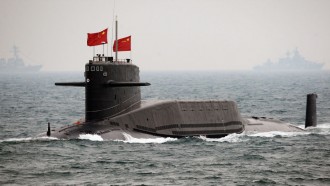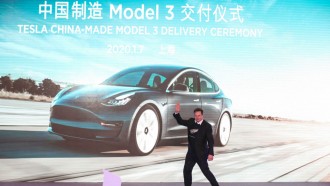For over 150 years, scientists have been investigating the greenhouse effect, a phenomenon that serves as the Earth's thermostat, controlling the temperature of our planet and ultimately playing a crucial role in our survival.
Europe Leading the Way
However, recent changes in the amount of carbon dioxide in the atmosphere have caused concern among experts, as they fear it could disrupt this delicate balance and have detrimental effects on the planet. Governments are now acting on all indicators, with Europe leading the way.
The European Union has announced ambitious plans to become the world's first climate-neutral continent by 2050. To meet this target, the EU intends to cut emissions by 55% by 2030 compared to 1990 levels.
The Green Deal
To achieve these goals, the European Commission has unveiled the Green Deal, a proposal to fundamentally redesign the energy, transport, and food systems of Europe. The Green Deal is expected to require around €1 trillion ($1.05 trillion) in sustainable investments and will require significant political will to pass into law.
Based on a Wired report, the plan presents a vision of how a modern economy may be rebuilt to fit a world that takes climate change into account. If it succeeds, this is what Europe's new, greener future would look like.
A Green Future
One key element of the Green Deal is the expansion of renewable energy sources, particularly offshore wind, tidal energy, and other forms of power that can take advantage of Europe's extensive coastline.
The Green Deal notably aims to boost the usage of hydrogen as a natural gas alternative. The Green Deal envisions a future with electric charging stations along highways, substantial cycle lanes in cities, and more high-speed rail travel. The proposal also calls for the use of environmentally friendly fuels in planes and ships.
To reduce the environmental impact of Europe's buildings, the Green Deal proposes a widespread renovation of residential, commercial, and public buildings to ensure that all existing buildings are zero emissions by 2050.
The Green Deal also aims to improve the quality and quantity of Europe's forests, in part by planting 3 billion trees by the end of the decade. The Farm to Fork strategy, a key component of the Green Deal, aims to reduce the environmental impact of the EU's food system by reducing pesticide use and cutting the sales of antimicrobial medicines, such as antibiotics, for farmed animals by 50%. The strategy also promotes organic farming and efforts to increase the number of bees on agricultural land.
Based on a previous Tech Times report, the global food system, which includes both production and post-farm operations such as processing and distribution, is a significant contributor to emissions.
Read Also: Oxygen Supplies Running Dangerously Low in UK's NHS Hospitals Amid Covid-19 and Winter Pressures
The Green Deal also addresses the environmental impact of Europe's marine industries, known as the "blue economy." This includes the decarbonization of marine transport, reducing microplastic pollution, reversing biodiversity loss, improving ship recycling, and incentivizing fishermen to collect litter and fishing gear lost at sea.
To support the development of green technologies and solutions, the EU is investing heavily in research and development, including a €1 billion Green Deal research call that has supported projects such as the production of green hydrogen in Germany and the prediction of forest fires in Spain.
Stay posted here at Tech Times.
Related Article: The Tallest Wind Turbine Installation Ship On Its Way to Help Build the World's Biggest Wind Farm










